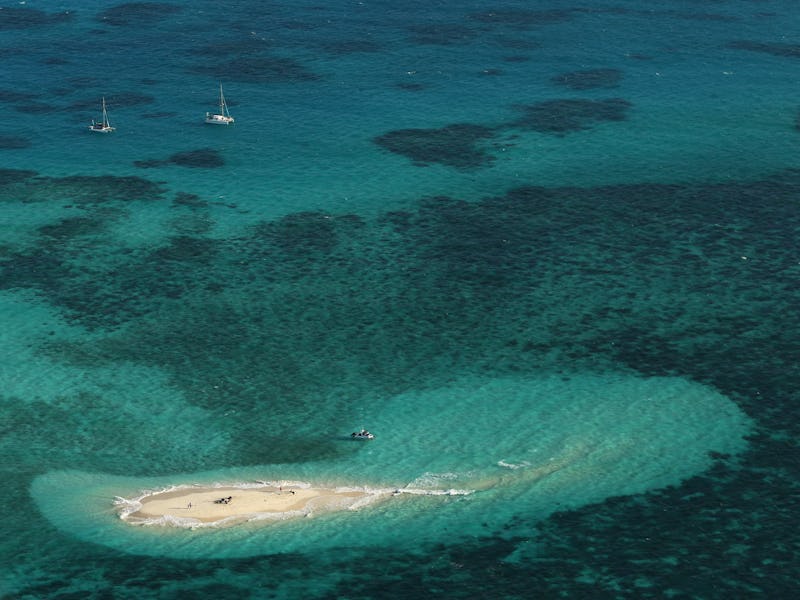The Great Barrier Reef's Great Hope Could Come from Outer Space
"They are literally there telling us that they’re dying."

The Great Barrier Reef is deteriorating at an alarming pace, but scientists are optimistic space satellite imagery could help keep it from disappearing completely.
Space-based images could help to retrieve data on the reef’s demise in a way that’s “faster, cheaper and better,” said Paul Hardisty, head of the Australian Institute of Marine Science on Thursday at the 2017 International Astronautical Congress in Australia, home to the reef.
Until recently, efforts to save the reef have included using on-Earth technology — like divers, airplanes and reef-based weather stations — to document the current state of coral and what causes the bleaching to occur. But with satellite images, like the one below, we can see just how fast bleaching can occur at the Great Barrier Reef — designated a World Heritage Site in 1981 — in a span of eight months.
Photos taken less than a year apart show massive bleaching of the Great Barrier Reef.
Hardisty’s federal agency is currently exploring how to adapt to climate change and fight bleaching by studying ways to speed up corals’ ability to recover from damage and artificially acclimate to rising temperatures. However, researchers are lacking the technology needed to take such innovative steps, and raising awareness about the dire plight of the reefs will be necessary to raise the funds needed to support that research. Current space-based satellite imagery, while they can better survey the state of coral, are still lacking, Hardisty says.
Australia has been working with the U.S. National Oceanic and Atmospheric Administration and NASA, who both have programs focused on reversing coral bleaching using satellite imagery.
Hardisty says he hopes these technologies will help them to develop ways to “proof” coral from bleaching in the future.
This picture of coral bleaching was taken of the Great Barrier Reef in March 2017.
Researchers and environmentalists have long focused their efforts on saving the coral reefs since they were first hit with global mass bleaching — which often leads to death — in 2008.
Just in the last two years, huge areas of the 1,400 mile long Great Barrier Reef have died, and the widespread bleaching shows no signs of stopping, Hardisty said. A major contributor to bleaching is higher water temperatures, which will continue to rise due to climate change and global warming.
“What you have left over is this ghostly — almost haunting if you’ve gone underwater and seen it — remnant dead coral skeleton,” Hardisty said. “They are literally there telling us that they’re dying, and so we’re out of time. We’ve got to start acting now.”
This satellite photo, taken by NASA from space, shows how much bleaching affects the Great Barrier Reef.